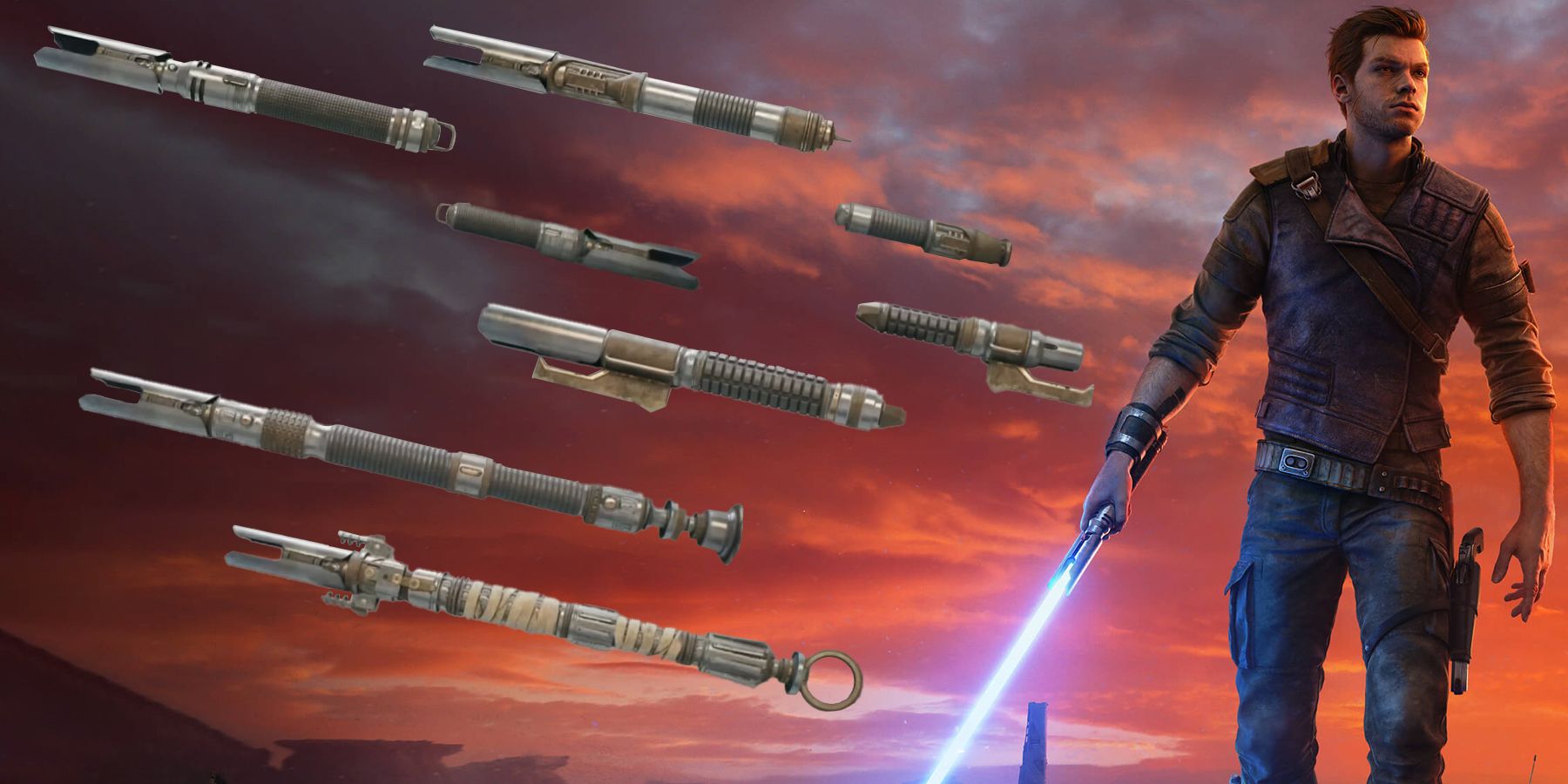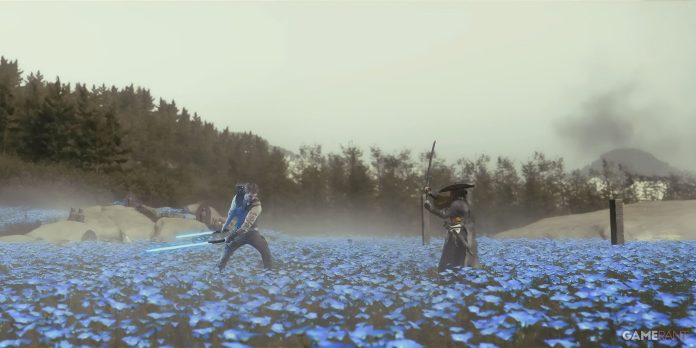Star Wars Jedi: Survivor pushed the limits of lightsaber combat in a video game. Cal Kestis’ lightsaber technique reflects his background, and his incorporation of a blaster into his fighting reflects how he changes to survive in a post-Order 66 world. However, there is room for improvement in Star Wars Jedi: Survivor‘s sequel, and Ghost of Yotei.
Ghost of Yotei‘s State of Play did a deep dive into its new gameplay that has seen a bit of an overhaul from Ghost of Tsushima, and it’s one that Star Wars Jedi: Survivor‘s sequel could learn from. It’s likely that Jedi: Survivor‘s sequel will build on previous games in the trilogy and hopefully improve its combat. While Jedi: Survivor‘s combat was well-received, there is still room to grow, and Ghost of Yotei‘s approach could become the perfect inspiration for it.

Related
Star Wars Jedi: Survivor – 12 Best Lightsaber Skins
Players can create a seemingly infinite amount of lightsabers of unique designs thanks to the plethora of parts found in Star Wars Jedi: Survivor.
Ghost of Yotei Shakes Up Its Combat With More Choice
Ghost of Tsushima used stances for its combat, but they differed in style and function when compared to Star Wars Jedi: Survivor. Where Ghost of Tsushima made most use out of a katana and ranged weapons, with stances being used to differentiate the technique used, Survivor used stances to differentiate both technique and weapon type.
What Atsu and Cal’s Stances Have in Common
Ghost of Yotei‘s Atsu is far more similar to Cal Kestis, in that they both had to develop their fighting style in the field rather than through training with a teacher. Cal did receive training, but it was limited and ended abruptly years before his training was completed, making his lightsaber combat more unpredictable than a conventional Jedi with more formal training. Cal’s situation forces him to be more adaptable, and is a requirement for survival.
Like Cal in Jedi: Survivor, Atsu’s combat style is determined by the weapons she uses, and adapts depending on what weapon is in her hand. Unlike most Jedi, Cal brings a blaster into combat, giving him more ranged ability than the average Jedi. While the stance system in Jedi: Survivor was well-received, it was limited by only allowing two stances into the field at a time, instead of allowing players to switch between them all at will.
Evolving Star Wars: Jedi’s Stances
In the State of Play showcase, Atsu is shown with a variety of weapons, all of which require a change in combat style. The weapons chosen depend on the type of enemy faced and player preference. Most notably, Atsu is able to seamlessly change between weapons and combat styles whenever she wants, a marked difference from Jedi: Survivor‘s approach. Some of the weapons she uses mirror Cal’s lightsaber stances, such as the odachi and crossguard stance, dual swords and dual blades, and katana and single-blade.
Jedi: Survivor obviously has its own identity, and isn’t a 1:1 comparison with Ghost of Yotei. But Atsu can switch between many different weapons without being limited to two at a time, which would go a long way in making the combat in Jedi: Survivor‘s sequel more dynamic. Some of this was seen in Jedi: Fallen Order with the dual-wield lightsaber, but had limited use because of development time.
Like in Ghost of Yotei, Jedi: Survivor has certain stances that better suit fighting certain enemies. Building on that in Jedi: Survivor‘s sequel, and letting Cal switch between five or more stances in the field would make gameplay more dynamic and show his growth as a Jedi outcast who needs to adapt. There are still options to add to his repertoire, including a lightsaber pike, which was used by the Jedi Temple Guards during the Republic era, or even other weapons that non-Force users commonly use.
